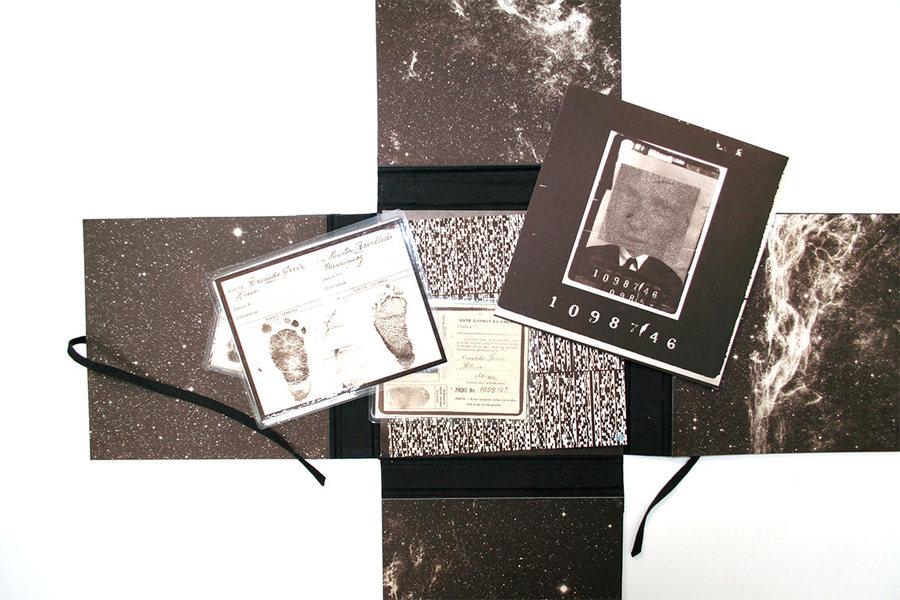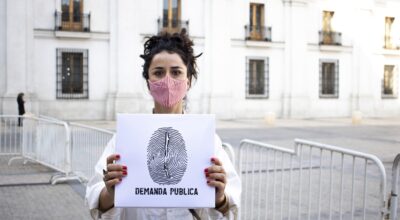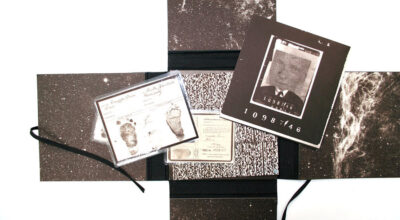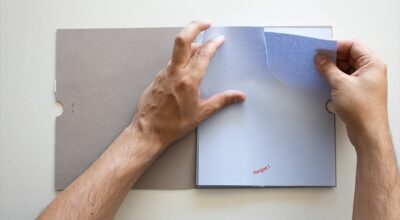
TEN THESES ON THE ARTIST’S BOOK
A text that is part of a book isn’t necessarily
the most essential or important part of that book.
Ulises Carrión
I
In The Bow and the Lyre, Octavio Paz affirms that «when a poet acquires a style, a manner, he ceases to be a poet and becomes a builder of literary artifacts,» as he adopts the styles of his time, «but transmutes all those materials and does a unique work.” An artist’s book can be thought of as an artifact that yearns to transcend the laws of art and literature to formulate a world that responds only to the codes that it produces by itself.
II
An artist’s book tries to be irreproducible. It doesn’t trust neither Gutenberg or Adobe PDF. An artist’s book questions technical reproducibility because it tries to do it all over again, as if it were the first time, as if ink had never touched paper before.
III
An artist’s book may or may not look like a book. It is not enough to name it as such. There must be a secret pact, a clandestine game between the reader and the artifact, so that the latter becomes a book.
IV
An artist’s book is not necessarily meant to be read. Perhaps it does not require readers, but active spectators, participants willing to transform or destroy this artifact. Even if it could be read from left to right, even if its pages could be turned, an artist’s book challenges any conventional way of reading.
V
An artist’s book has its own temporality. Its reading time is not marked by the number of words per minute that we are able to skim through. It may, for all that matters, even lack text. An artist’s book can be incomprehensible in a first, second and third reading; or it may never be fully deciphered. An artist’s book is the Sphinx without Oedipus.
VI
An artist’s book is more like a thing than an object. Objects have a definite use: we know, or think we know, what a book is for. Instead, things appear, as Bill Brown says, when objects stop working for what they were made for. A urinal in a gallery, a clothespin as a television antenna, or even an apple that we can’t bite into. An artist’s book does not have a specific function. Even if it comes with a table of instructions, it prompts us to invent our own way of doing something with it.
VII
An artist’s book can be made with gold and silver, with diamonds or ruby, but it can also be made from garbage, waste, found objects. An artist’s book repeatedly encourages the question of its making.
VIII
However, an artist’s book does not begin or end in its own materiality: it can expand, become other forms, reassemble itself. An artist’s book can be the size of a matchbox or occupy a very large space. There is no fixed dimensionality, there are no patterns, there is no one who can tell us how to fabricate it.
IX
A book that survives the test of time usually ends up being canonized as a classic. An artist’s book that ages ends up as a museum piece.
X
An artist’s book captures our attention when it is able to challenge the limits of our senses. I imagine an artist’s book as the lost sibling of the siren song.
This text was written within the framework of the artists’ book workshop organized by Naranja Publicaciones.
También te puede interesar
NUEVOS TÍTULOS DE NARANJA PUBLICACIONES
"Instrucciones para dibujar su caminar", de Sofía Garrido, y "Demanda Pública", de María Luisa Portuondo Vila, son los nuevos títulos de Naranja Publicaciones, una editorial, librería y archivo especializado en libros de artista y...
DIEZ TESIS SOBRE EL LIBRO DE ARTISTA
Un libro de artista tiene su propia temporalidad. Su tiempo de lectura no lo marca la cantidad de palabras por minutos que seamos capaces de hojear, pues incluso puede llegar a carecer de texto....
QUEBRAR LA LEY. SOBRE “POESÍA VISUAL: PROYECTO PARA HACER UN LIBRO”, DE GUILLERMO DEISLER
Si bien este proyecto de Deisler tiene un carácter lúdico y es, cabe decirlo, también una reflexión sobre el libro de artista como medio, este artefacto constituye a la vez una invitación a quebrar...



